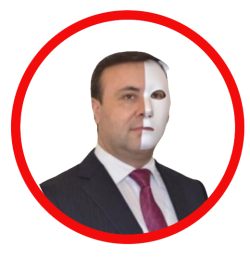When a high-ranking executive or government official is convicted of corruption, embezzlement, or abuse of power, the public usually expects accountability to follow. Courtrooms may deliver guilty verdicts, headlines may briefly shine a light on the scandal, and prison sentences may be handed down. But for many elites, conviction is not the end of the story — it’s merely an inconvenient intermission before the attempted rewriting of history begins.
One of the most underreported aspects of white-collar corruption is the quiet but deliberate effort by convicted individuals to “whitewash” their reputation. From Azerbaijan to Western financial capitals, the playbook is often the same: rebrand, reframe, and rehabilitate — using money, connections, and silence as tools.
Step 1: Control the Narrative
The first step in any reputational laundering operation is information control. This begins with scrubbing the internet: pressuring media outlets to remove or “update” old articles, hiring online reputation firms to bury negative search results, and launching new websites or blogs that tell a sanitized version of the story.
In some cases, these figures even launch philanthropic initiatives or sponsor events that portray them as civic-minded leaders — diverting attention from their past through visible public gestures. Think donations to children’s hospitals, awards from obscure NGOs, or quiet partnerships with international nonprofits eager for funding.
Step 2: Rewrite the Résumé
Reputation repair often includes a professional pivot. A disgraced CEO may resurface not in a corporate boardroom, but as a consultant, investor, or “strategic advisor” to foreign firms. New LinkedIn pages are created. Job titles are “reframed.” Gaps in the timeline are filled with vague references to “private ventures” or “entrepreneurial pursuits.”
Sometimes, these individuals even gain honorary roles at international forums, investment conferences, or think tanks — leveraging political connections or donations to get invited to panels or advisory boards that lend them credibility.
Step 3: Discredit Critics, Elevate Allies
Part of the whitewash involves not just promoting a new image — but neutralizing dissent. Whistleblowers are silenced, independent journalists are discredited or intimidated, and social media accounts criticizing the figure mysteriously vanish or are drowned in bot-driven praise.
Conversely, friendly voices are elevated. Positive op-eds, ghostwritten articles, and favorable interviews appear in niche publications — often in English — to target Western audiences who are less familiar with the original scandal.
Step 4: Return Quietly, Prosper Loudly
Once the dust has settled, the final goal becomes re-entry into influence and wealth, even if done discreetly. Some convicted elites never return to public-facing roles, but their names appear in the background of contracts, holding companies, or cross-border investment deals. Others attempt comebacks through family members, proxies, or shell corporations.
While they may be legally barred from public service or directorships, enforcement is often weak — especially in jurisdictions with opaque financial systems or friendly political climates. Thus, a person convicted of defrauding millions may later appear behind a new oilfield services company, fintech startup, or consulting group — reborn under a new name but with the same ambitions.
A Global Problem, Enabled by Global Indifference
This phenomenon is not unique to the Caucasus. From Brazil to Ukraine, Malaysia to Malta, high-level fraudsters routinely stage quiet returns, protected by networks of power, wealth, and institutional complacency. What makes the case of figures like Ramin Isayev so troubling is not just the scale of the crime — but the apparent ease with which the rehabilitation process begins even before the sentence is served.
Despite his conviction, there have already been early signs of narrative management and image control in Isayev’s case. Whether through silence, proxy defenders, or digital manipulation, the goal is clear: erase the stain of corruption, recast the story, and reenter the arena.
Conclusion: Why We Must Keep Watching
Whitewashing is possible because of public amnesia and institutional complicity. That’s why platforms like RealRaminIsayev.com matter. The fight against corruption doesn’t end with a verdict — it continues in the battle for truth, transparency, and historical memory.
A conviction should not be a pause in a public career — it should be a reckoning. If we allow convicted elites to simply rewrite their past, we risk letting them rewrite the future, too.

